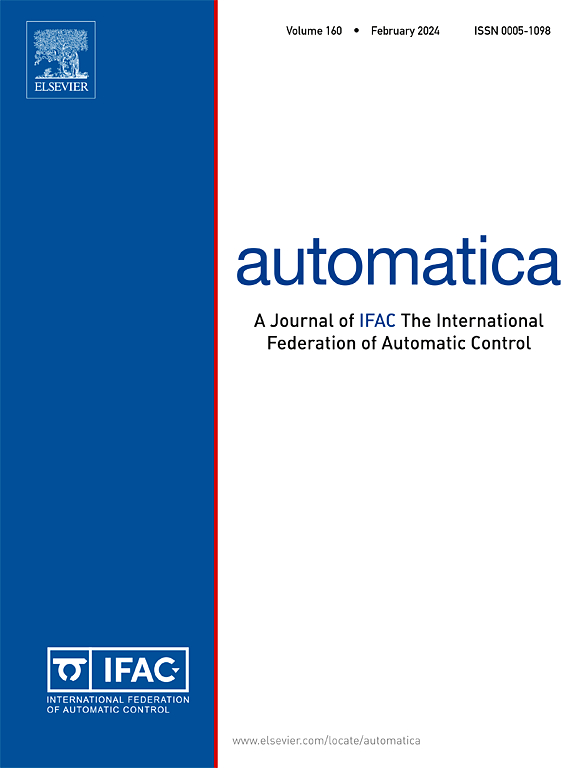基于值强化学习的非线性MPC终端成分表征方法
IF 5.9
2区 计算机科学
Q1 AUTOMATION & CONTROL SYSTEMS
引用次数: 0
摘要
非线性模型预测控制(MPC)的稳定性很大程度上取决于终端区域和成本等稳定因素。更大的终端区域不仅扩大了闭环系统的吸引区域,而且有助于降低在线计算成本。然而,文献中现有的方法常常对表征终端成分的自由度施加限制。这种限制来自于对预先确定的线性局部控制器或预先确定的控制李雅普诺夫函数的依赖。本文介绍了一种利用基于值的强化学习(RL)的终端成分表征的创新方法。这种方法为扩展终端区域提供了充分的自由度。为此,采用深度神经网络学习参数状态值函数,作为MPC的终端代价。局部控制器采用一步MPC,而不是预先设定的线性或非线性反馈控制器。然后,通过一步集展开迭代构造终端集序列。通过仿真验证了该方法的有效性。本文章由计算机程序翻译,如有差异,请以英文原文为准。
A characterization method of terminal ingredients for nonlinear MPC using value-based reinforcement learning
The stability of nonlinear model predictive control (MPC) relies significantly on stabilizing factors such as the terminal region and cost. A larger terminal region not only expands the region of attraction for the closed-loop system but also contributes to reducing online computation costs. However, existing methods in the literature often impose limitations on the degrees of freedom available for characterizing terminal ingredients. This limitation arises from the reliance on either a predetermined linear local controller or a preset control Lyapunov function. This paper introduces an innovative approach to terminal ingredient characterization leveraging value-based reinforcement learning (RL). This method provides ample degrees of freedom for expanding the terminal region. To achieve this, a deep neural network is employed to learn the parametric state value function, serving as the terminal cost for MPC. The local controller adopts a one-step MPC instead of a predetermined linear or nonlinear feedback controller. Subsequently, a terminal set sequence is constructed iteratively through the one-step set expansion. The proposed approach’s effectiveness is validated through simulations.
求助全文
通过发布文献求助,成功后即可免费获取论文全文。
去求助
来源期刊

Automatica
工程技术-工程:电子与电气
CiteScore
10.70
自引率
7.80%
发文量
617
审稿时长
5 months
期刊介绍:
Automatica is a leading archival publication in the field of systems and control. The field encompasses today a broad set of areas and topics, and is thriving not only within itself but also in terms of its impact on other fields, such as communications, computers, biology, energy and economics. Since its inception in 1963, Automatica has kept abreast with the evolution of the field over the years, and has emerged as a leading publication driving the trends in the field.
After being founded in 1963, Automatica became a journal of the International Federation of Automatic Control (IFAC) in 1969. It features a characteristic blend of theoretical and applied papers of archival, lasting value, reporting cutting edge research results by authors across the globe. It features articles in distinct categories, including regular, brief and survey papers, technical communiqués, correspondence items, as well as reviews on published books of interest to the readership. It occasionally publishes special issues on emerging new topics or established mature topics of interest to a broad audience.
Automatica solicits original high-quality contributions in all the categories listed above, and in all areas of systems and control interpreted in a broad sense and evolving constantly. They may be submitted directly to a subject editor or to the Editor-in-Chief if not sure about the subject area. Editorial procedures in place assure careful, fair, and prompt handling of all submitted articles. Accepted papers appear in the journal in the shortest time feasible given production time constraints.
 求助内容:
求助内容: 应助结果提醒方式:
应助结果提醒方式:


